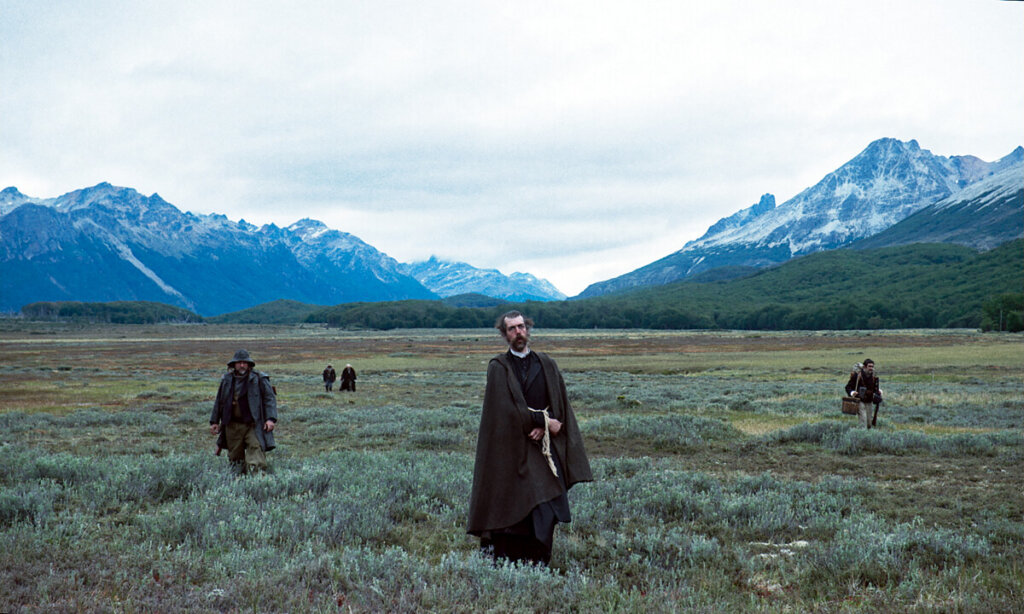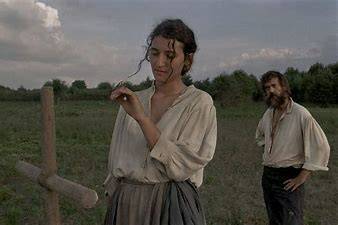“The Tale of King Crab” Enthralled Me.
Tuscany: We are in the world of Francesco Rosi’s “Christ Stopped at Eboli” (1979), Ermanno Olmi’s “The Tree of Wooden Clogs (1978), and the entire oeuvre of the Taviani Brothers. There are also echoes of the masters of Italian neorealism going back to Roberto Rossellini, Vittorio De Sica, Luchino Visconti, Federico Fellini, and Pier Paolo Pasolini.
Tierra del Fuego: We are now in Herzog country. The country of that crazy conquistador Aguirre and his search for El Dorado is admixed with John Huston’s “The Treasure of the Sierra Madre” (1948) and Sergio Leone’s “The Good, the Bad and the Ugly” (1966).
“The Tale of King Crab” is the first fictional film by Italian-American filmmakers Alessio Rigo de Righi and Matteo Zoppis. It follows in the footsteps of their documentaries “Il Solengo” and Belva Nera,” both inspired by Italian folk tales. In fact, “The Tale of King Crab” is a double bill. A double bill which takes its influences from such disparate sources as, in the first half, Francesco Rosi’s “Christ Stopped at Eboli” (1979), Ermanno Olmi’s “The Tree of Wooden Clogs (1978), and the entire oeuvre of the Taviani Brothers. It also echoes the masters of Italian neorealism going back to Roberto Rossellini, Vittorio De Sica, Luchino Visconti, Federico Fellini, and Pier Paolo Pasolini. The second half takes an abrupt turn, and its influences lie on the broad shoulders of the great German director Werner Herzog, particularly his masterpiece, “Aguirre, the Wrath of God” (1972).

Framing Device.
The movie opens with a framing device in which a bunch of wizened older men from the ancient Tuscan village of Vejano gather around a table to tell a story. Perfect for establishing their opening tale, the device becomes increasingly intrusive as the film proceeds. A voiceover may have been a better idea. But this is a minor quibble. The story, set around the Risorgimento (the unification of Italy) of 1871, introduces us to Luciano, a doctor’s son who has become the town drunk and the town madman. Never sober, he strikes a ghostly figure as he wanders the lush countryside and bathes in the lake outside the village. The villagers, the majority of whom live in abject poverty, are afraid of him. Luciano is played with Klaus Kinski-like ferocity by local artist and first-time actor Gabriele Silli.
The only person in the village to show him kindness is his childhood friend Emma (Maria Alexandra Lungu), who can see the lost soul behind those blazing eyes. However, her father (Severino Sperandio), a sheep farmer constantly on the lookout, disapproves of their moments together.

Tableaux Vivants
Luciano’s reaction to a local prince’s closing of a doorway typically allows the village people free access to transport their goods and animals, sealing his destiny. It transports us to the movie’s second half. There is a gorgeous and memorable scene where Luciano barges in on the prince’s festivities. The guests, who include Emma, wear traditional garb, and here we are treated, Parajanov-style, to a dazzling series of tableaux vivants before Luciano is transported from the premises.
Cut to the movie’s second half where, after Luciano burns down the prince’s doorway (and other events which I won’t spoil), Luciano’s father has enough social standing to have him banished for life (as opposed to a prison sentence) to the desolate but magnificent terrain of Tierra del Fuego, that bunch of islands at the very tip of South America whose hegemony is shared between Argentina and Chile.

Tierra del Fuego
We are now in Herzog country. The country of that crazy conquistador Aguirre and his search for El Dorado is admixed with John Huston’s “The Treasure of the Sierra Madre” (1948) and Sergio Leone’s “The Good, the Bad and the Ugly” (1966). Luciano, now mainly speaking Spanish, takes the identity of a dying priest after stealing his treasure map – the seashore is dotted with the wrecks of old Spanish galleons that ran ashore transporting gold and other valuables back to the mother country. The father’s method for finding such treasure in a fresh mountain lake with pure water is to follow the peregrinations of the red king crab of the title, which he keeps in a bucket. Pure water adds another layer to this tale since most of the rivers of this harsh land are contaminated by poisonous algal blooms and a horrible death to anyone who drinks from them! Thus, Luciano becomes part of the great 19th century Tierra del Fuego gold rush, which was dangerous – he competes with a bunch of ruthless and desperate men who are armed with rifles – and most of the treasure hunters were Italian émigrés beginning that long tradition of emigration from Italy to Argentina.

Lacustral Beauty
As you have gathered by now, Rigo de Righi and Zoppis are extremely cine-literate. However, their references never seemed forced, and, as a movie lover, I basked in their cinematic vision. Yes, the disparate tone of the two pieces may strike some viewers as extreme. Yet, they have many things in common, from the long, slow neorealistic takes to images of such beauty that they bring tears to your eyes (the cinematographer is Simone D’Arcangelo). The two lacustral scenes that bookend the film – Luciano and Emma in a Tuscan Lake in part one and the sun’s rays hitting the mountain lake with its buried treasure in part two – are reason enough to see this spellbinding film.

















